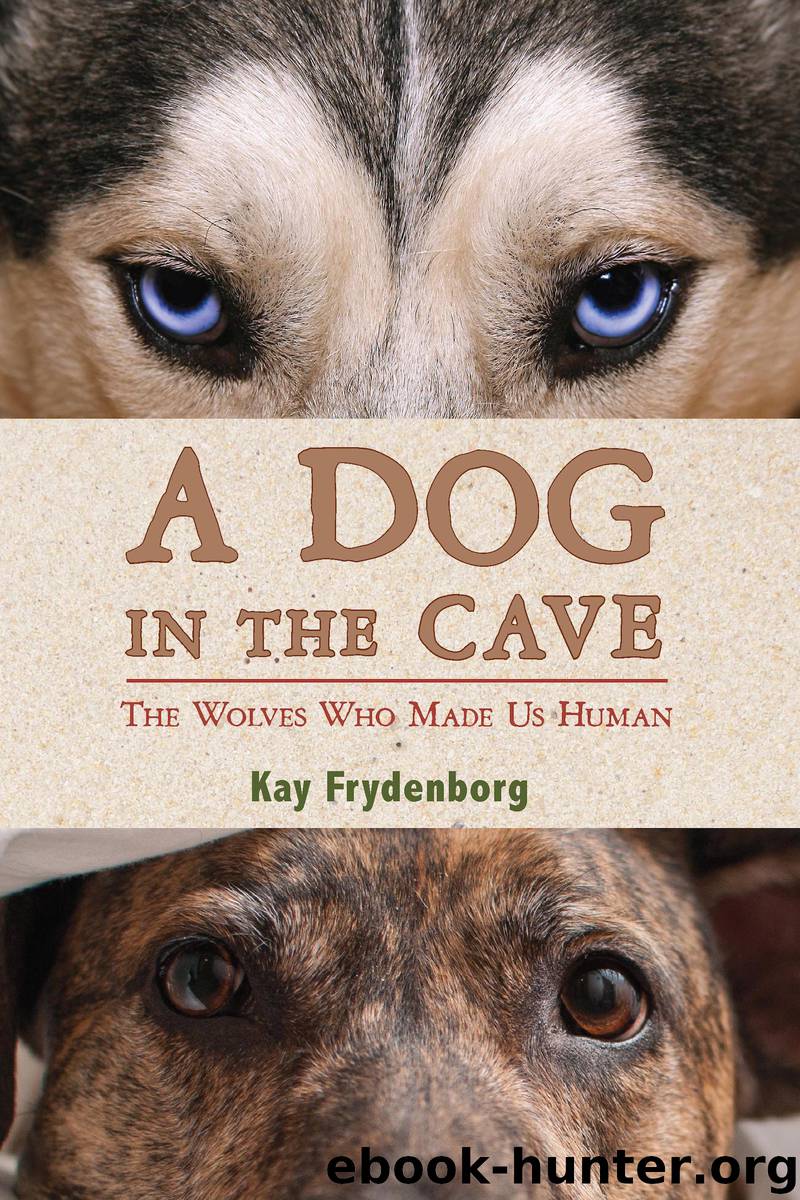A Dog in the Cave by Kay Frydenborg

Author:Kay Frydenborg
Language: eng
Format: epub
Publisher: Houghton Mifflin Harcourt
Robert Wayne, an evolutionary biologist, geneticist, and leading dog/wolf researcher at the University of California, Los Angeles, has been in the forefront of the scientific rethinking of dog domestication. His work on the wolf genome provided some of the earliest clear evidence of the direct relationship between dogs and wolves. His latest findings reveal more. They suggest that the first dogs evolved not from any line of wolf currently alive in the world, but from a now-extinct group of European wolves. That happened, he says, sometime between about thirty-two thousand and eighteen thousand years ago, after these ancient wolves began growing closer and closer to human hunter-gatherers.
More answers are on the way. Researchers are now able to extract DNA from ancient wolf and dog fossils and compare it in a more detailed way than ever before with DNA from modern dog breeds and wolves. At the same time, early results have revealed just how confusing trying to trace the genetic lineage of domestic dogs will be. This is because newly domesticated dogs continued to breed with wild wolves after domestication, and also because domestication probably happened in several locations and at different times, with some early dog lines going extinct. Besides, humans are a restless species, and we’ve taken our beloved dogs with us whenever we moved. Once wolves became dogs, they began crisscrossing the globe with their wandering human companions, traveling to places far from their geographic origins.
In a 2002 study, evolutionary biologist Jennifer Leonard analyzed a group of North American dog fossils from animals who lived between 1450 and 1675 A.D., well before the first Europeans viewed Alaska in 1741. This meant they had to be native to America, but the question of their ancestry remained unsolved. At the time of the study, the precise locations where dog domestication began were even more of a mystery than they are today. Were these all-American dogs descended from North American gray wolves once domesticated by Native Americans? Only the DNA from their bones would tell. So the genetic material was extracted and analyzed, along with that from the bones of other dogs from archaeological sites in Mexico, Peru, and Bolivia that predated the arrival of Columbus.
The results were a big surprise. All of these American dogs were descended from gray wolves native to Europe and Asia; they bore no genetic relationship to the indigenous North American wolf at all. They likely came from various lineages of Asian dogs who had traveled far from their origins, just as Eurasian humans had done. From that time forward, dogs and the people who would give rise to Native American populations migrated across the whole of North, Central, and South America.
For a major study published in the journal Science in late 2013, Robert Wayne’s team studied the DNA of ten ancient fossils with wolflike traits and eight doglike fossils from Europe, dating from thirty-two thousand to nineteen thousand years ago. The researchers found that the domestic dogs grouped genetically with ancient wolves or modern
Download
This site does not store any files on its server. We only index and link to content provided by other sites. Please contact the content providers to delete copyright contents if any and email us, we'll remove relevant links or contents immediately.
The Mayflower and the Pilgrims' New World by Nathaniel Philbrick(4463)
I'm Still Scared by Tomie dePaola(4350)
Bloody Times by James L. Swanson(4335)
Pocahontas by Joseph Bruchac(4216)
Bomb: The Race to Build--And Steal--The World's Most Dangerous Weapon (Newbery Honor Book) by Steve Sheinkin(3901)
Flesh and Blood So Cheap by Albert Marrin(3803)
An American Plague by Jim Murphy(3738)
Little Author in the Big Woods by Yona Zeldis McDonough(3484)
The Giant and How He Humbugged America by Jim Murphy(3414)
Hello, America by Livia Bitton-Jackson(3127)
The President Has Been Shot!": The Assassination of John F. Kennedy by Swanson James L(3073)
Harry Potter: A History of Magic by British Library(3019)
The Landing of the Pilgrims by James Daugherty(2913)
Gettysburg by Iain C. Martin(2806)
The Extraordinary Suzy Wright by Teri Kanefield(2686)
Ben Franklin's Almanac by Candace Fleming(2497)
The Impossible Rescue by Martin W. Sandler(2311)
Bloody Times: The Funeral of Abraham Lincoln and the Manhunt for Jefferson Davis by James L. Swanson(2087)
Who Was Louis Braille? by Margaret Frith(1956)
